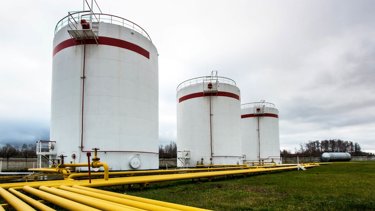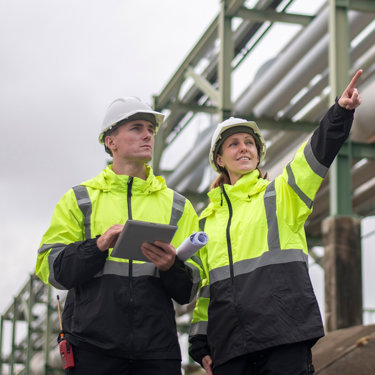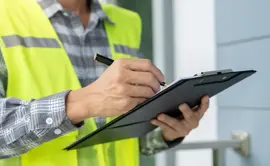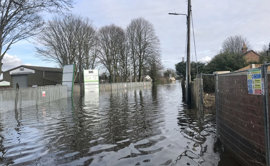The importance of storage tank inspections and main issues we encounter
Published: 10 March 2023
Why storage tank inspections are a priority
Caring for your storage tanks from start to finish is vital if you want them to function correctly and prevent any environmental incidents. Ensuring you undertake tank inspections is important for several reasons:
Safety: Storage tanks are often used to store hazardous or flammable materials, which can pose a serious risk to human health and the environment if they leak or spill. Regular inspections can help identify potential problems before they become serious safety hazards.
Compliance: Many industries are subject to regulations that require regular inspections of storage tanks to ensure compliance with environmental and safety standards. EEMUA 159 and API 653 both provide guidance on inspection periods. Failure to comply with these regulations can result in fines or legal action.
Maintenance: Regular inspections can help identify maintenance issues that may need to be addressed, such as corrosion or wear and tear on tank components. Addressing these issues early can help prevent more serious problems down the line.
Cost savings: Catching problems early can also help reduce the cost of repairs or replacement. Regular inspections can help ensure that storage tanks are in good working order and extend their lifespan.
Bespoke guidance if EEMUA 159 doesn’t apply
Should there be a rare occurrence where your storage tanks do not fall within the scope of EEMUA 159, then we are experienced and knowledgeable to develop a bespoke and focused written scheme of examination (WSE). This in-house guidance embodies all the guidance established by EEMUA to ensure that industry best practice is adhered to at all times.
Where we identify any defects or non-compliance to either EEMUA 159/API 653/WSE when we complete the tank inspection, we can offer a full scope service that provides the best course of action to ensure the tank is compliant and avoids any incidents.

Main issues during storage tank inspections
When we attend sites to undertake an internal or external inspection, we discover many problems. Over time, we have been able to collate a list of common issues across many sites and our recommendations to prevent these from reoccurring.
Tank lean from the vertical
When tanks are installed. they should be positioned vertically straight. This prevents contents from weighing on one side of the tank and putting unnecessary pressure on a particular side of the tank.
In this instance, we would complete an external laser settlement survey. This in-depth examination would determine how far out of the vertical the tank is positioned, and then we can assess and recommend steps to remediate the situation.
Usually this would involve lifting the tank from its position, and then rectifying and improving the foundations. Once complete, the tank would be resettled on the new foundations and checked for vertical alignment.
Settlement of foundations
Similar to tank alignment and foundations not being correct, foundation settlement is an issue that we see on a regular basis.
This is where foundations have been placed but then incorrectly levelled, or soil erosion has occurred, or there has been improper foundation design or poor preparation of the site, or simply not given sufficient time to settle before the tank weight is applied.
This causes the tank to be misaligned. Once again, we would lift the tank, remove and rectify the foundations, and then replace the tank.
Local and generally thinned areas
Corrosion on storage tanks can be a significant problem, as it can compromise the structural integrity of the tank and lead to leaks, spills, and other safety hazards.
Corrosion occurs when metal reacts with its environment, such as when water or chemicals come into contact with the metal surface of the tank. When corrosion occurs in one specific area, the plate of the storage tank can become thinned.
Thinning normally occurs due to top surface pitting, or underflow due to water ingress, both leading to corrosion and membrane failure.
When we discover thinning of storage tanks, applying a protective coating to the surface of the tank that has become thin can help prevent further corrosion. Coatings such as epoxy or polyurethane can provide a barrier between the metal and the environment. This work should all be completed to the guidance established in API 653.
Regular inspections of the tank can help identify any signs of further thinning and corrosion early on, allowing for prompt repairs. Regular cleaning and maintenance can also help prevent corrosion.
Structural integrity concerns
Structural integrity is a critical concern when it comes to storage tanks, as failure or damage to tanks can lead to catastrophic consequences.
The main area where we discover structural deficiency or cracking is where the floor of the tank and the shell of the tank meet. This joining point is where the most pressure is applied and is usually the first point of failure for a storage tank.
Cracking can occur in storage tanks due to various factors, such as stress, fatigue, and temperature changes. Cracks can be difficult to detect, and if left untreated, they can grow and lead to tank failure. Water ingress can cause cracking if the storage tank is not protected, and this could also occur from water underneath the foundation if they have not been sealed correctly.
To resolve any cracking on the tank, we would complete a full non-destructive testing and inspection programme to identify the areas of concern. If the problems were the result of moisture ingress from the foundations, these would be checked and re-sealed. Other stress points would be checked and re-enforced if appropriate.
Repairs, modifications and welding procedures
Non-compliant repairs on storage tanks can have serious consequences, both for the safety of workers and for the environment.
When repairs are not carried out according to the necessary standards and regulations, there is an increased risk of leaks, spills, and other types of failures that can lead to accidents and environmental damage. Non-compliant repairs can lead to fines, penalties, and legal action, as well as increased insurance costs and reputational damage.
If repairs or welds have been undertaken and they haven’t followed the valued guidance set out in EEMUA 159 and API 653, then there is a potential for the repair to fail.
How we can help
We ensure that a full assessment of the storage tank is completed.
If the storage tank is suffering from any damage or cracking, then repairs or welding would be carried out. All repairs on storage tanks are carried out according to the necessary standards and regulations, and by qualified professionals with appropriate training and experience. This includes following all applicable safety protocols, ensuring proper materials and equipment are used, and completing necessary inspections and testing to confirm the repairs are effective and compliant.
In extreme cases where the damage is beyond repair, we would recommend a tank replacement.
Inspections on storage tanks are essential for ensuring safety, compliance, and efficiency. It is important to conduct regular inspections to identify and address potential issues before they become major problems.
More from our Knowledge Hub
Environmental compliance today, creating a sustainable tomorrow
Helping you reduce risk to the environment and your operation by managing assets compliantly while achieving commercial, ESG, and net-zero goals.
Contact our experts




